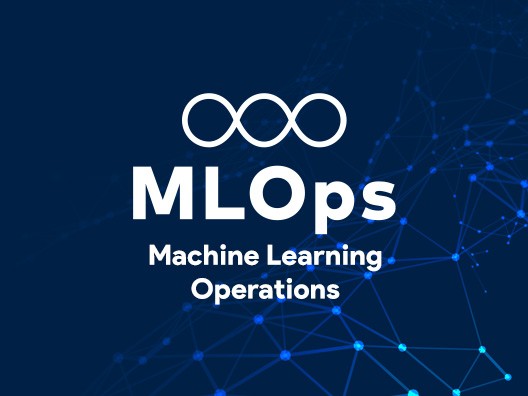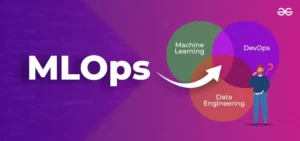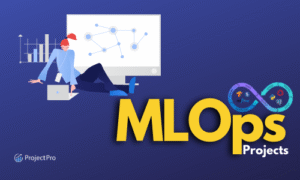MLOps and Automation: Driving the Future of AI and Machine Learning
Introduction
In the modern era of artificial intelligence (AI) and data-driven innovation, machine learning operations (MLOps) has emerged as one of the most critical practices for enterprises. While developing a machine learning (ML) model in a research setting is one thing, deploying, scaling, and maintaining it in real-world business environments requires far more than just algorithms. This is where MLOps and automation step in.
MLOps combines machine learning, DevOps, and data engineering to streamline the end-to-end lifecycle of ML models, from data preparation and model training to deployment, monitoring, and continuous improvement. Automation, on the other hand, ensures that repetitive, error-prone, and resource-intensive processes are handled efficiently, reducing manual intervention and accelerating outcomes.
This article explores the fundamentals of MLOps, its relationship with automation, real-world use cases, benefits, challenges, and the future of this rapidly evolving field.
What is MLOps?
MLOps (short for Machine Learning Operations) refers to the set of practices that aim to standardize, streamline, and automate the lifecycle of ML models. Think of it as DevOps for machine learning, but with added complexities such as data versioning, model drift, bias monitoring, and large-scale deployment challenges.
The core goals of MLOps include:
-
Faster deployment: Reducing time from model development to production.
-
Scalability: Ensuring models work seamlessly across large-scale environments.
-
Reliability: Monitoring performance and preventing failures.
-
Reproducibility: Ensuring experiments can be repeated with consistent results.
-
Collaboration: Allowing data scientists, ML engineers, and IT teams to work together efficiently.
Why Automation is the Backbone of MLOps
Automation is not just a feature of MLOps — it’s the driving force behind its effectiveness. Unlike traditional software, ML models continuously evolve with new data, user behavior, and business requirements. Manual processes in ML pipelines can quickly lead to inefficiencies, bottlenecks, and even failure.
Key areas where automation supports MLOps:
-
Data Pipelines – Automating ingestion, cleaning, and transformation of data ensures consistency and scalability.
-
Model Training – Automated hyperparameter tuning, feature engineering, and experimentation reduce human workload.
-
Deployment – Continuous integration/continuous delivery (CI/CD) for ML ensures seamless rollout of models.
-
Monitoring – Automated alerts for model drift, bias, and accuracy degradation keep systems reliable.
-
Retraining – Triggering automatic retraining of models when new data becomes available.
With automation, organizations can move beyond proof-of-concepts and achieve production-ready machine learning at scale.
The Key Components of MLOps Automation
Let’s break down the major components that make MLOps effective through automation:
1. Data Management and Versioning
Machine learning models are only as good as the data they are trained on. Automated tools for data versioning (such as DVC or Delta Lake) ensure that models can be trained consistently across different datasets.
2. Model Training and Experimentation
Tools like MLflow, Kubeflow, and SageMaker allow data scientists to automate hyperparameter tuning, experiment tracking, and reproducibility of results.
3. CI/CD Pipelines for ML
Borrowed from DevOps, CI/CD for ML automates the deployment of new model versions into production environments. Tools like Jenkins, GitHub Actions, and GitLab CI integrate with ML frameworks to ensure smooth rollouts.
4. Monitoring and Observability
Automation tools help monitor model drift, data drift, and bias detection. Frameworks like Evidently AI and WhyLabs provide automated monitoring dashboards and alerts.
5. Model Governance and Compliance
Automation ensures that ML systems comply with regulations and ethical guidelines by tracking lineage, permissions, and model explainability.
Benefits of MLOps and Automation
1. Speed and Efficiency
Automation eliminates repetitive manual tasks, allowing models to move from experimentation to production much faster.
2. Cost Reduction
By optimizing workflows, companies save on infrastructure, engineering hours, and wasted resources.
3. Scalability
Automated systems allow organizations to deploy hundreds of models simultaneously without breaking down processes.
4. Reliability
Continuous monitoring and retraining prevent performance degradation and reduce risks.
5. Collaboration and Productivity
Automation provides a shared framework for data scientists, ML engineers, and DevOps teams to work cohesively.
Real-World Use Cases of MLOps and Automation
1. Finance and Banking
Banks use automated fraud detection systems powered by MLOps pipelines. Continuous monitoring ensures the models stay updated with new fraud patterns.
2. Healthcare
Hospitals leverage MLOps automation for disease prediction models. Automated retraining ensures models remain accurate as new medical research becomes available.
3. Retail and E-commerce
Recommendation engines and dynamic pricing models rely on automated MLOps pipelines to deliver personalized shopping experiences.
4. Autonomous Vehicles
Self-driving cars depend on automated pipelines to continuously update object detection and navigation models with real-world driving data.
5. Manufacturing
Predictive maintenance models use automated monitoring to reduce machine downtime and optimize operations.
Challenges in Implementing MLOps and Automation
While the benefits are immense, organizations face several challenges when adopting MLOps with automation:
-
Tool Overload – The ecosystem is vast, and choosing the right tools can be overwhelming.
-
Data Governance – Ensuring data privacy, compliance, and quality in automated pipelines is complex.
-
Skill Gap – Many organizations lack professionals skilled in both ML and DevOps.
-
Integration Issues – Legacy systems often struggle to integrate with modern MLOps tools.
-
Cost of Setup – Initial investments in infrastructure and automation tools can be high.
MLOps Automation Tools and Frameworks
Here are some popular tools that organizations use for automating ML pipelines:
-
Kubeflow – For ML workflows on Kubernetes.
-
MLflow – For experiment tracking, model packaging, and deployment.
-
TensorFlow Extended (TFX) – End-to-end ML pipeline automation.
-
SageMaker (AWS) – Cloud-based MLOps automation.
-
DVC (Data Version Control) – For dataset versioning.
-
Evidently AI – For monitoring and drift detection.
Each tool plays a role in streamlining parts of the ML lifecycle, and many companies adopt hybrid stacks for maximum flexibility.
Best Practices for Successful MLOps Automation
To achieve the best results, enterprises should adopt the following best practices:
-
Start Small and Scale Gradually – Begin with one use case before automating the entire ML pipeline.
-
Establish Clear Ownership – Define roles for data scientists, MLOps engineers, and DevOps teams.
-
Focus on Data Quality – Automation is only as good as the data it works with.
-
Implement Continuous Monitoring – Never “set and forget” ML models; monitor performance constantly.
-
Ensure Security and Compliance – Automate checks for GDPR, HIPAA, and other regulations.
The Future of MLOps and Automation
The future of MLOps is closely tied to AI-driven automation itself. As AI models become more autonomous, we may witness self-optimizing and self-healing ML pipelines, where models can retrain, redeploy, and optimize themselves without human intervention.
Some future trends include:
-
AutoML Integration – Automated machine learning will further simplify model building.
-
Edge AI and MLOps – Automated deployment pipelines for edge devices like IoT sensors and mobile apps.
-
AI-driven Observability – Monitoring systems powered by AI to predict potential failures.
-
Explainable AI Automation – Automated generation of model explainability reports for compliance.
-
Generative AI for MLOps – Large language models (LLMs) assisting in writing, debugging, and automating ML workflows.
Conclusion
MLOps and automation are no longer optional for organizations looking to scale AI effectively. Together, they provide the backbone for operationalizing machine learning models in real-world environments, ensuring speed, efficiency, scalability, and reliability.
From finance to healthcare, e-commerce to autonomous vehicles, industries are already leveraging MLOps automation to transform the way they work. While challenges like skill gaps, governance, and integration persist, the future of MLOps is undeniably bright.
As businesses continue to invest in AI, those who adopt robust MLOps automation strategies will lead the way in innovation, while others risk falling behind in a rapidly evolving digital landscape.
For quick updates, follow our whatsapp channel –https://whatsapp.com/channel/0029VbAabEC11ulGy0ZwRi3j
https://bitsofall.com/https-yourblog-com-new-ai-crime-vectors-emerge/
https://bitsofall.com/new-ai-browsers-redefining-the-way-we-surf-the-web/
Next-Gen Microsoft Models: Shaping the Future of AI and Enterprise Innovation







